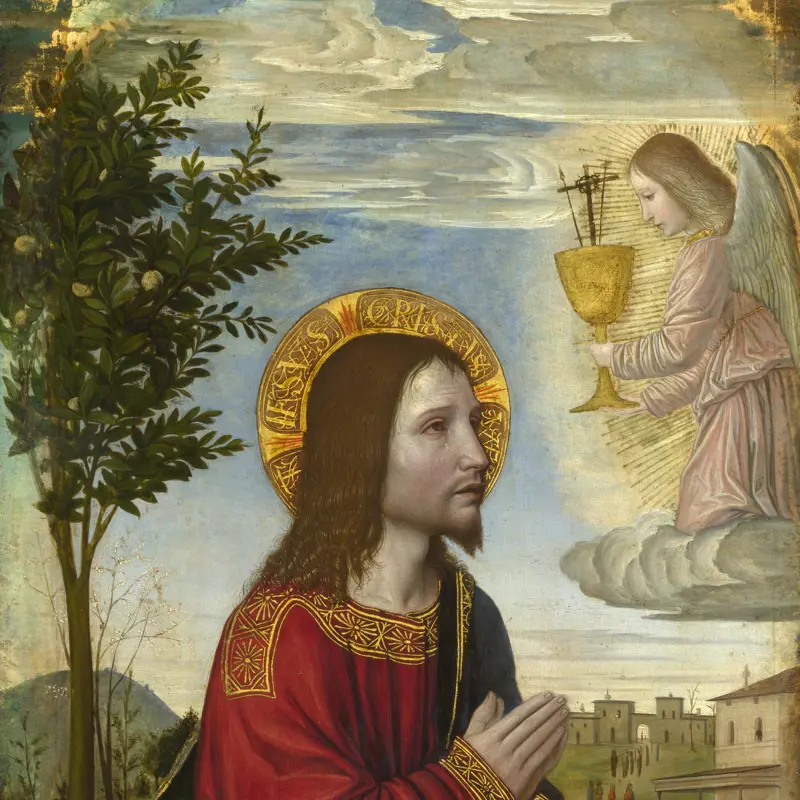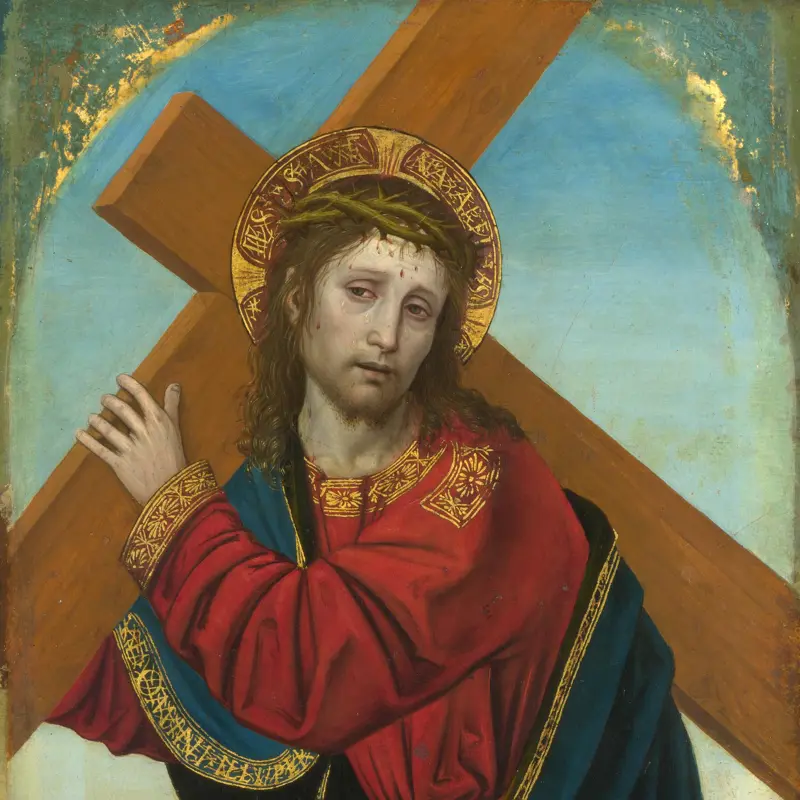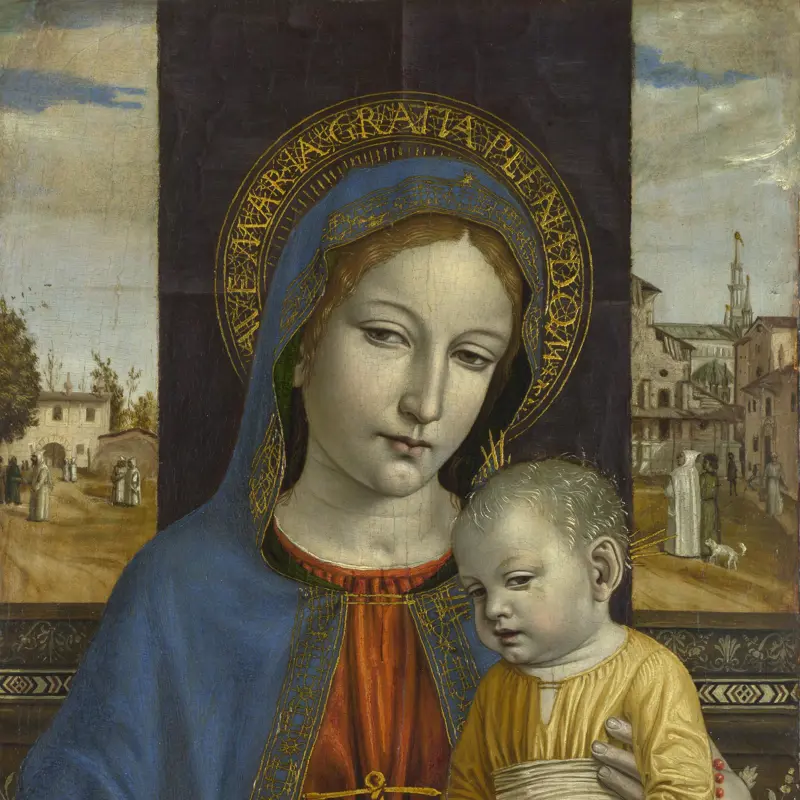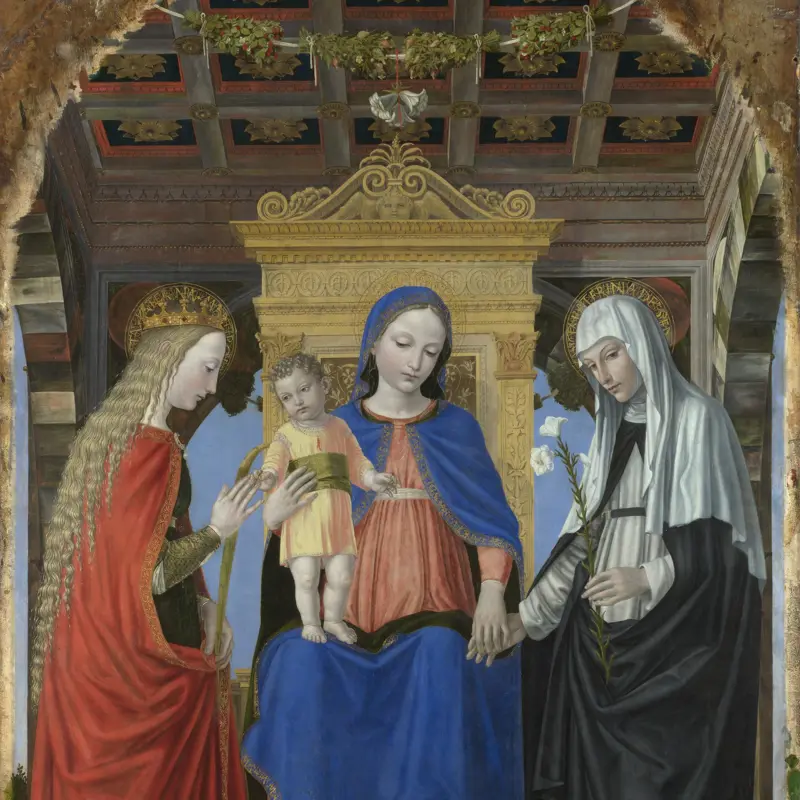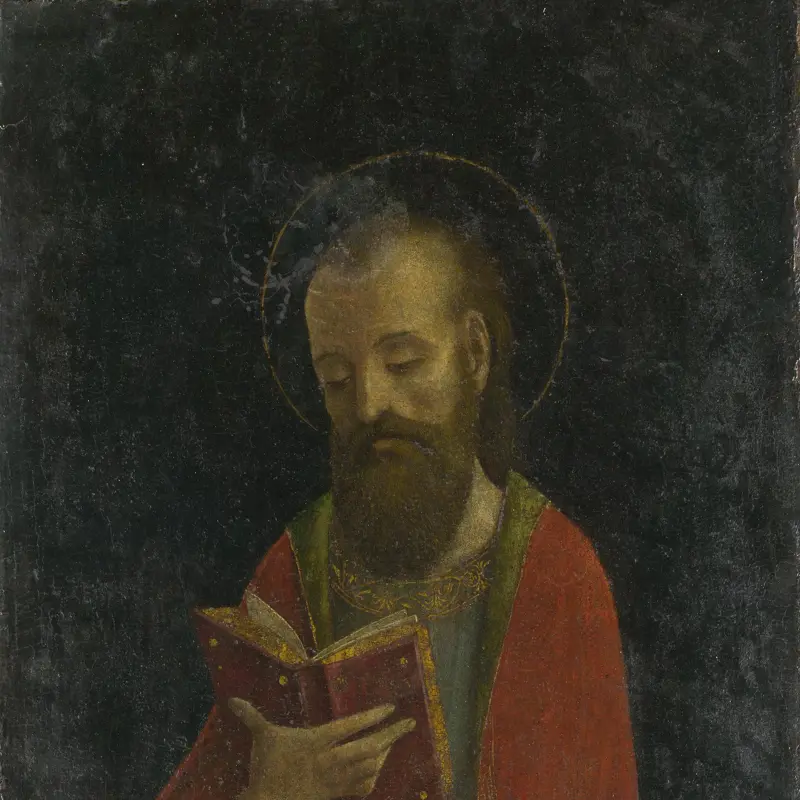Ambrogio Bergognone, 'The Agony in the Garden', probably 1501
About the work
Overview
Christ kneels in prayer. He gazes up at an angel, who presents him with a chalice containing the instruments of the Passion (Christ’s torture and crucifixion). To the right, in a walled garden, three of the apostles sleep while a group of soldiers, led by Judas, peer furtively through an arched gateway. This is the Agony in the Garden, as told in the Gospel of Mark (14: 32–43).
Knowing he is going to die, Christ asks God to ‘take away this cup from me’. As he prays, the apostles repeatedly fall asleep – and fail to see the soldiers who have come to arrest Christ. Behind them dawn is breaking and the white clouds are lit from below by the rising sun.
This is one of a pair of small panels which were once part of a polyptych (multi-panelled altarpiece). The other, Christ carrying the Cross, is also in the National Gallery’s collection.
Key facts
Details
- Full title
- The Agony in the Garden
- Artist
- Ambrogio Bergognone
- Artist dates
- Active 1481; died 1523?
- Part of the series
- Two Panels from an Altarpiece
- Date made
- Probably 1501
- Medium and support
- Oil on wood
- Dimensions
- 99.7 × 45.1 cm
- Acquisition credit
- Bought, 1879
- Inventory number
- NG1077.1
- Location
- Room 10
- Collection
- Main Collection
Provenance
Additional information
Text extracted from the ‘Provenance’ section of the catalogue entry in Martin Davies, ‘National Gallery Catalogues: The Earlier Italian Schools’, London 1986; for further information, see the full catalogue entry.
Bibliography
-
1840Catalogo della scelta Galleria Melzi vendibile in Milano nella Contrada di S. Maria Segreta, n.p. n.d.
-
1898H.F. Cook, Catalogue of Pictures by Masters of the Milanese and Allied Schools of Lombardy, London 1898
-
1901G. Carotti, Capi d'arte appartanenti a S.E. la duchessa Joséphine Melzi d'Eril-Barbò, Bergamo 1901
-
1911National Gallery, An Abridged Catalogue of the Pictures in the National Gallery, London 1911
-
1951Davies, Martin, National Gallery Catalogues: The Earlier Italian Schools, London 1951
-
1961M. Davies, The Earlier Italian Schools, 2nd edn, London 1961
-
1978M. Levey, The Venetian Scene, 2nd edn, London 1978
-
1986Davies, Martin, National Gallery Catalogues: The Earlier Italian Schools, revised edn, London 1986
-
2001
C. Baker and T. Henry, The National Gallery: Complete Illustrated Catalogue, London 2001
About this record
If you know more about this work or have spotted an error, please contact us. Please note that exhibition histories are listed from 2009 onwards. Bibliographies may not be complete; more comprehensive information is available in the National Gallery Library.
Images
About the series: Two Panels from an Altarpiece
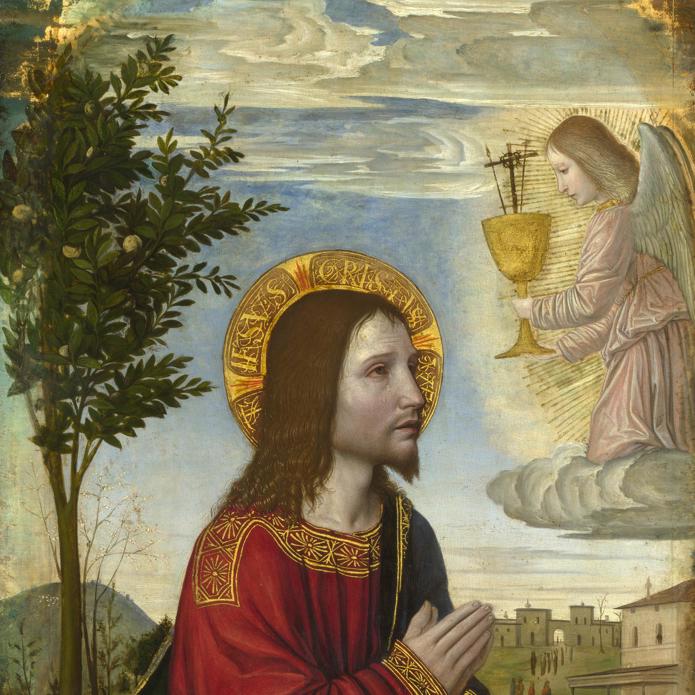
Overview
These two paintings of different episodes of the Passion (Christ’s torture and death) were once part of a triptych (a painting in three parts), along with The Virgin and Child with Two Angels, which is also in the National Gallery’s collection.
The three were not, however, made to go together. The two smaller panels of Christ may well have formed part of a multi-panelled altarpiece made by Ambrogio Bergognone in around 1501 (the date on one panel); the picture of the Virgin and Child is earlier, perhaps from the late 1480s, and is probably by Ambrogio’s brother, Bernardino.
Ambrogio Bergognone ran one of the leading painting workshops in Lombardy in the late fifteenth century, and his brother worked closely with him.

